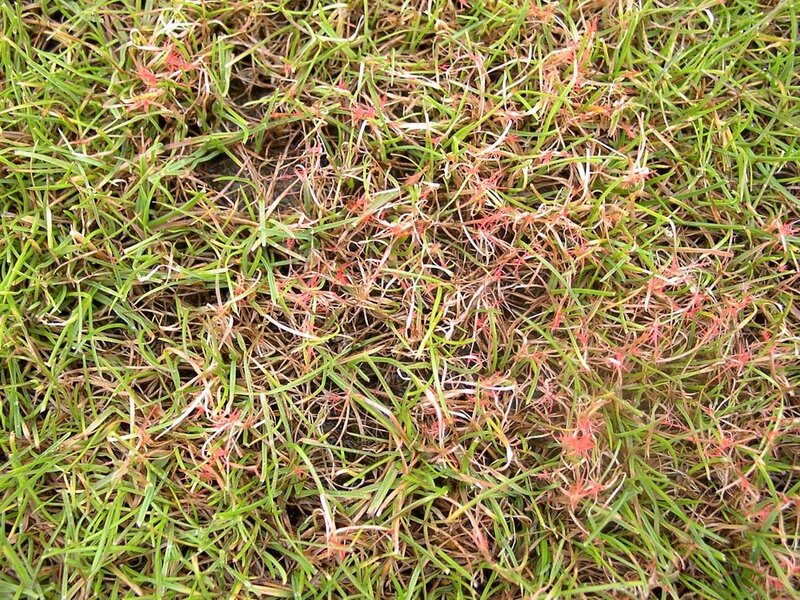The mission to achieve a beautiful lawn seems like a never ending one. Just as soon as you think you have your weed-, feed-, and seed problems solved, something new comes along you’ve never seen before. Like Red Thread.
Whether or not you’re familiar with Red Thread, you can learn to identify this problem in your grass and how to solve it. Read on.
What is Red Thread Disease?
Are you seeing patches of grass with red or pink strands? You are most likely experiencing Red Thread disease in your lawn. Red Thread is a lawn fungus, or disease that affects your grass. It’s a fungal infection you can recognize thanks to the pink or red “threads,” or stromata, that show up in a spiky or wispy formation in your lawn, usually in patches. These threads are also sometimes called antlers due to their shape.
The fungus, Laetisaria fuciformis, that causes Red Thread doesn’t affect the roots of the plant, so it does not kill the grass. Instead, it lives in the thatch and soil and is spread via dead plant material.
Red Thread lawn fungus is not the same as “pink patch,” although many aspects look similar. Pink patch is caused by Limonomyces roseipellis.
Where Red Thread is common
Because Red Thread is a fungus, it thrives in wet conditions, and you’re most likely to see it in spring and summer, especially in humid and wet areas. You may also see red thread in autumns or winters with heavy dews or excessive precipitation. It also thrives in lower light conditions and on frequently traveled grass — both factors in weakening a plant and making it susceptible to disease.
The cool-season grasses of our area are vulnerable to Red Thread. This fungus loves fescues, so Northwest Ohio turf that contains fescue is at risk, as are lawns with bermuda and ryegrass.
GrassMaster is an expert at identifying lawn diseases and fungi such as Red Thread. If you’re concerned about disease in your lawn, contact us to take a look.
How to get rid of Red Thread
You can’t completely get rid of Red Thread spores from the soil and area, so your best bet for red thread grass treatment is to feed your lawn and practice good lawn care.
Regular applications of lawn fertilizer should bring your soil’s nitrogen levels back to the desired range to support strong, healthy grass. Also take care to clean and maintain your tools, including lawnmower blades and other cutting implements, to prevent the spread of disease.
Finally, dethatching and aerating your lawn will introduce much-needed oxygen to the roots, promoting a more vibrant ecosystem and helping your lawn to fend off attacks such as Red Thread and other diseases.
But tackling this problem doesn’t have to take a lot of work. Grassmaster offers regular lawn fertilization packages, including organic fertilizer, which will take care of feeding and nurturing your lawn to bring it back to good health. Combined with our care and maintenance programs, we can have your lawn looking good again in no time … and you won’t have to lift a finger.
Contact us
At Grassmaster, we offer both long-term care and one-time solutions, so you can keep your lawn beautiful and disease-free without all the hard work. Contact us to find out how we can help you create (and keep!) the beautiful green turf of your dreams.

